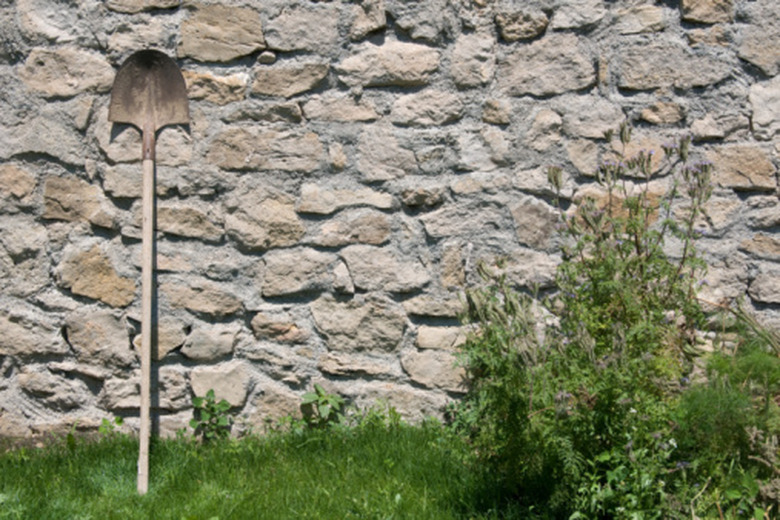Parts Of A Shovel
Shovels come in many shapes and forms, each designed to perform a specific task, such as breaking earth or moving snow. Each type is made of a combination of parts that facilitate the task. The configuration of a shovel's parts will be a factor in your choice of a particular shovel for the job at hand.
Blade
The blade does the work of cutting through dirt, clay, snow or other material. Shovel blades are made from varying materials. Gardening shovels typically have flat or pointed blades designed to cut into the earth. Snow shovels have wide and often curved blades that are designed to scoop and move snow. Most shovel blades are made from some kind of tempered steel, but snow shovel blades are often made of lightweight plastic for easy maneuverability.
- Shovels come in many shapes and forms, each designed to perform a specific task, such as breaking earth or moving snow.
- Most shovel blades are made from some kind of tempered steel, but snow shovel blades are often made of lightweight plastic for easy maneuverability.
Handle
A shovel handle can be made of plastic, wood or steel; it is usually bolted to the shovel blade. Handle designs include straight, Y-handle and curved. Straight handles are simple straight pieces of wood or plastic that are easily gripped. Y-handles, forked at the end, are usually stronger and more comfortable to use than straight handles. Curved, or bent, handles are designed to help users lift heavier loads; snow shovels frequently have this type of handle.
Foot Rest
Some shovels, particularly those used for gardening and other earth-breaking tasks, are equipped with foot rests, located on the top edge of the blade. It is a thicker or wider edge that can accommodate your foot. To use the foot rest, place your foot on the foot rest and push against it, using your leg strength to put more power into the digging effort.
- A shovel handle can be made of plastic, wood or steel; it is usually bolted to the shovel blade.
- Some shovels, particularly those used for gardening and other earth-breaking tasks, are equipped with foot rests, located on the top edge of the blade.
Care and Maintenance
Time and use can wear down even the most well-constructed shovel. Do not leave your shovel outside where it can get wet; always store it in a garage or shed where it will be protected from the elements. File metal shovel blades occasionally to smooth any dull or dented edges. Use a shovel only for the purpose for which it was designed. Do not use a shovel to pry up heavy objects or to hammer at tough clay; doing so could damage the blade or handle.
